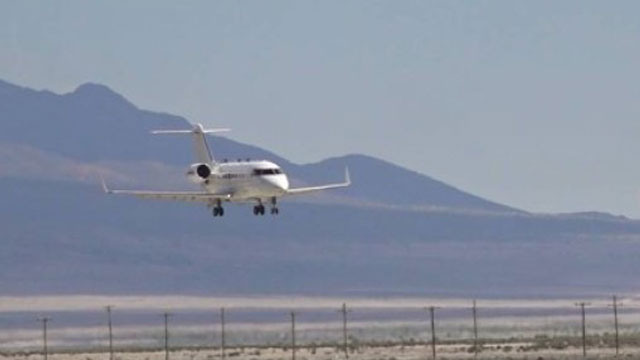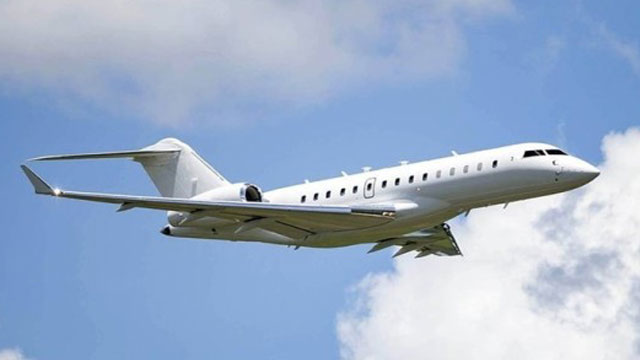By Eric Braut |

The Airborne Reconnaissance Targeting Exploitation Mission Intelligence System is a manned contractor-owned, contractor-operated proof of concept aerial intelligence, surveillance, and reconnaissance technical demonstrator jet, delivering modernized sensor capabilities against near-peer threats and adversaries. (Photo Credit: U.S. Army Photo)

The Airborne Reconnaissance and Electronic Warfare System (ARES) is a manned contractor-owned, contractor-operated proof of concept aerial intelligence, surveillance, and reconnaissance technical demonstrator jet, delivering modernized sensor capabilities against near-peer threats and adversaries. (Photo Credit: U.S. Army Photo)
The below article received honorable mention in the 2024 Major General Harold J. “Harry” Greene Awards for Acquisition Writing in the category of Innovation. Susan Tyndall, Lauren Scicchitano, and Michael Amabile also contributed to this article.
Project Director Sensors Aerial Intelligence (PD SAI), is a prominent fixture in the Army acquisition community, partnering with other organizations such as Project Manager Fixed Wing (PM FW), as materiel developers to field Army aerial intelligence, surveillance, and reconnaissance (ISR) collection systems used by Headquarters, Department of the Army (HQDA) G-2, United States Army Intelligence and Security Command (INSCOM) and other community stakeholders for decades. As the needs of the Army have evolved, so has PD SAI and its efforts to provide the most capable aerial ISR materiel/sensing solutions to gather data to provide to senior leaders and warfighters across the globe.
Outdated fleet
In 2018, the priorities outlined in the 2018 National Security Strategy, recognized the need for advancement of intelligence vehicles that could surpass the current limitations of turboprop powered fixed wing aircraft within the Army’s acquisition community. Within the National Security Strategy, the White House stated in 2017, “Our diplomatic, intelligence, military, and economic agencies have not kept pace with the changes in the character of competition. America’s military must be prepared to operate across a full spectrum of conflict, across multiple domains at once.”
Systems, such as the Beechcraft RC-12 Guardrail Common Sensor (GRCS) and Enhanced Medium Altitude Reconnaissance and Surveillance System (EMARSS) required a technical refresh to adapt to new threats and technologies.
Acquisition methodology
While the need was recognized and idea conceptualized, the cumbersome nature of the Army acquisition process required a newer, quicker, more agile acquisition pathway. PM FW leadership as the Office of Primary Responsibility (OPR) proposed the use of Federal Systems Integration and Management Center (FEDSIM) service contracts. This acquisition methodology would allow for rapid fielding, taking only one year from award of contracts to fielding.
To test the theory of using business jets for aerial platforms and learning the limitations and advantages of sensing from them before developing the eventual High Accuracy Detection and Exploitation System (HADES) official program of record, PD SAI and PM FW decided to use contractor-owned, contractor-operated (COCO) jets as technical demonstrator/prototype aircraft. These jets would serve not only as test vehicles for sensor integration and testing for the future HADES program but serve active roles in critical operational missions across almost every continent.
Technical demonstrators
With a contract strategy in place, the U.S. Assistant Secretary of the Army for Acquisition, Logistics, and Technology decided to pursue a “bridging” option that incorporated quick reaction COCO aircraft into the field. These aircraft, a placeholder for the HADES program of record, filled the needs of the Global Force Management Allocation Plan (GFMAP).
Modified Challenger 650 jets could operate at higher altitudes using new and improved sensor systems, providing real time and drastically improved support to combatant commanders. Specifically, the Aerial Reconnaissance and Targeting Exploitation Multi-Mission Intelligence System (ARTEMIS), Airborne Reconnaissance and Electronic Warfare Systems (ARES), and Army Theater-Level High Altitude Expeditionary Next-AISR (ATHENA) platforms can fly higher, faster, and longer, to provide a modern and safe platform for PD SAI sensors and the Army flight crews operating them.
The updated platform also changed the available options and capabilities of the sensors integrated within. With the ARTEMIS, ARES, and ATHENA platforms designed for higher altitudes and drastically improved payload capabilities, it expanded sensor suite capabilities well into the future without the eventual need for upgrading airframes.
Each of the bridging programs used different payloads to test the maximum performance of each design while working out technical issues such as sensor integration, software updates, sensor repair, sensor replacement and repair/replacement/upgrade of aircraft components in various platforms both inside the continental U.S. (CONUS) and outside CONUS. ARES and ARTEMIS, as of December 2023, have logged nearly 1,000 sorties combined throughout Europe and the Pacific.
Sensors included on the platforms have relayed many hours of communications intelligence (COMINT), and electronic intelligence (ELINT), back to leaders and warfighters in ongoing operations throughout the world providing proof of concept. In addition to Department of Defense and contractor owned sensors used on the platforms, several other outside agencies have also shown interest in incorporating their sensors, or obtaining intelligence products, and have worked with PD SAI and PM FW on integration efforts. The change to jet powered platforms provides the opportunity for PD SAI to incorporate deep sensing capabilities among other useful tools for the modern leader and warfighter, like programs and capabilities already in use by the United States Air Force.
The ATHENA platforms began active service at the end of 2024. The aerial ISR community is optimistic that they will indeed continue to bridge the gap in service while the development and testing of HADES is underway, paving the way for the future of aerial ISR.
The future is here
While the platforms have improved and their capabilities increased, PD SAI wants to get intelligence to the warfighter quicker. This requires new data flow architecture from aircraft to warfighters.
The first data flow for this new architecture was operationally verified during Project Convergence 24, a military exercise where intelligence data from an ARTEMIS platform was sent to the Integrated Broadcast System (IBS) for simultaneous release to multiple analysts and tactical units across the world. A component termed the IBS Dissemination Manager (IDM) served as the adapter to the IBS network, and its use was a major success illustrating benefits of a collaborative, rapid acquisition process.
Originally developed 10 years ago by U.S. Special Operations Command, IDM was modified by the Army’s TROJAN program in 2019 and certified by the Joint Interoperability Test Command (JITC) for use in that timeframe for a limited set of messages. PD SAI partnered with TROJAN to enhance the IDM to enable both COMINT and ELINT reports and to obtain re-certification by JITC, thereby creating a single component that could be employed across multiple Army programs, significantly reducing future sustainment costs. The JITC approval for the upgraded IDM was received in August 2024, and the new end-to-end data flow went live in September 2024.
This is a historic leap in sensor to Soldier intelligence. What used to take hours (or days) is now reduced to minutes. With this innovation and the commitment of the PD SAI team, the goal of real-time sensor to Soldier intelligence is growing closer to reality.

